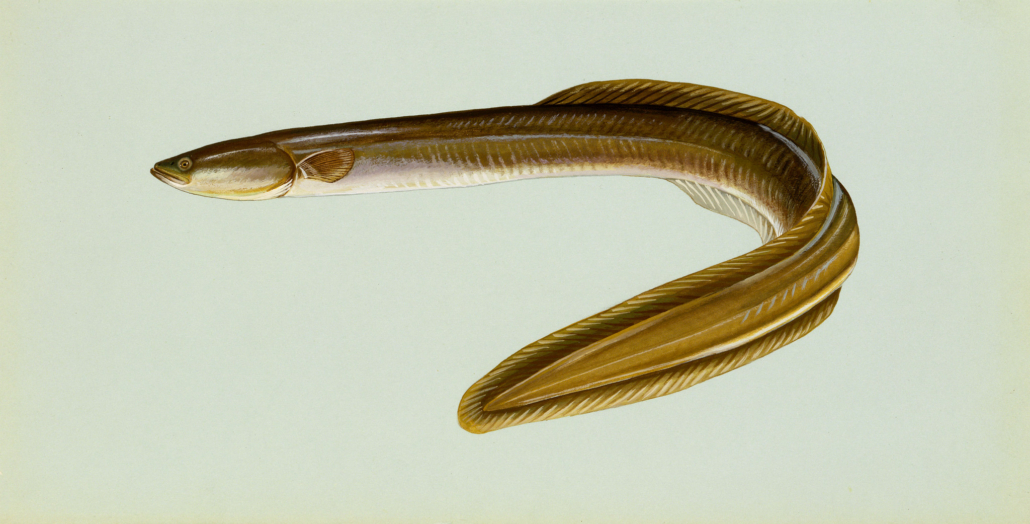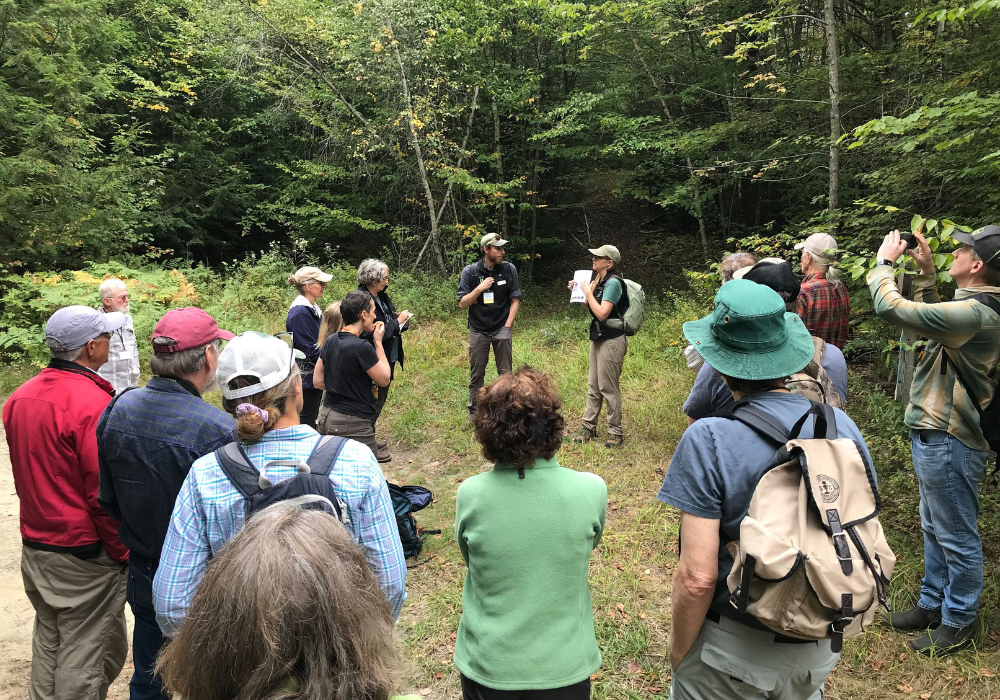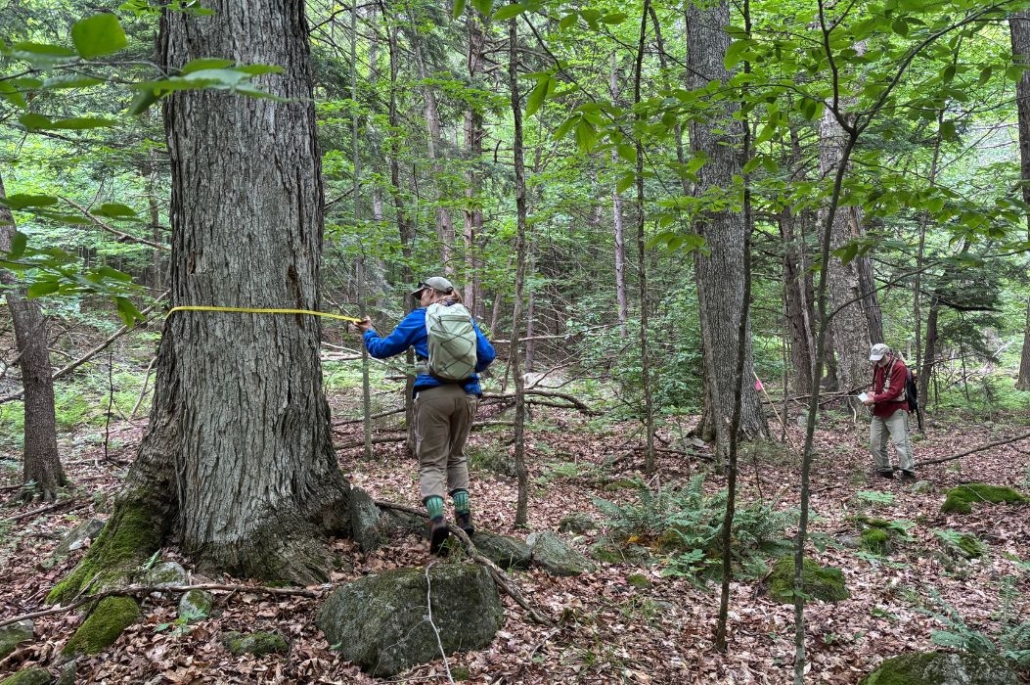NEWT Testifies in the Vermont Statehouse on the Value of Wildlands
In late January, NEWT’s Wildlands Ecology Director Shelby Perry was invited to testify before the Committee on Environment of the Vermont House of Representatives. The focus of the Committee’s meeting was the value of old and wild forests in Vermont Conservation Design (VCD), a statewide framework meant to guide efforts to preserve Vermont’s landscapes and biodiversity. (Perry was part of the team responsible for the latest update to VCD, published just over one year ago.) As Vermont’s human and natural communities change, state lawmakers are looking to VCD and the experts who had a hand in building it to ensure that state-led conservation initiatives balance the needs of Vermont’s many stakeholder communities.
Perry’s testimony made the case for robust representation of wildlands in VCD implementation planning. In her presentation, titled “Protecting the Wild: Northeast Wilderness Trust and the Case for Wildlands Conservation in Vermont,” she told Committee members that just 3.7 percent of Vermont is protected wilderness, where Nature directs the ebb and flow of life. These places tend to store more carbon than managed tracts, and act as critical havens of biodiversity in an era of precipitous wildlife declines. Perry then delved into the meticulous research and analysis that informed VCD, as well as ongoing work to improve the framework as a tool for creating a vibrant, resilient conservation landscape in Vermont.
To watch Perry’s testimony and presentation, play the YouTube video below. Her full written remarks follow.
January 30, 2025
Shelby Perry
Wildlands Ecology Director
Northeast Wilderness Trust
17 State Street, Suite 302
Montpelier, VT 05602
Testimony to House Committee on the Environment
Re: Northeast Wilderness Trust and Wildlands and Old Forest Background
Madame Chair and Members of the Committee:
Setting the Stage
History is a critical baseline from which to discuss wilderness conservation. Starting about 100,000 years ago an ice sheet covered all of the Northeast. That lasted until about 12,000 years ago. Following the retreat of the ice, humans arrived in this region, and for the next several thousand years before the arrival of European colonists, the region was home to many rich Indigenous cultures and a diversity of old forests that today we would call “old growth.” The region was a tapestry of diverse human and natural communities and was between 90 and 93% forested.
European colonists arrived in the late 1400s, with the establishment of colonies picking up steam in the 1600s. In an ecological split second, upwards of 80% of the forested landscape was cleared by the early 1900s in a race to domesticate the land for agriculture and produce charcoal and timber. Though these colonists had entered a landscape with a long and rich history of human habitation and use of the land, the scale of use and technology utilized by these new inhabitants far outpaced that of those they displaced.
From that ecological devastation, the modern wilderness movement was born. From his family cabin in the Adirondacks, Howard Zahniser, principal author of the Wilderness Act (1964), had a look at what forever wild conservation could do, and penned the wilderness act with these outcomes in mind. In it he chose the word “untrammeled” to refer to wildlands, using the word specifically because it does not refer to lands that are pristine or untouched, but instead means “not deprived of freedom.”
Wilderness as a conservation outcome is indeed a relatively recent concept in the long history of human presence in our region, but so too is industrialization, urbanization, anthropogenic climate change, the extirpation of apex predators, the damming of rivers, and the rapid loss of natural areas, biodiversity, and ecological function. Wilderness as a legal designation didn’t need to exist 400 years ago, but I would argue it does today. It is a critical component of a strategic and resilient vision that also includes woodlands, farmlands, communities, cities, and everything in between. Remembering the logging and cleared lands of our not-so-distant past are important reminders that wilderness conservation is not about conserving pristine or “unpeopled” landscapes, an all-too-common misconception. It’s about freedom and equity for the entire life community.
Introduction to Northeast Wilderness Trust
“Wilderness is not a special kind of place, but rather a special commitment we can make to any place.”
This quote is from Daryl Burtnett, a former ED of Northeast Wilderness Trust (NEWT), in response to a comment from another land trust professional about there being “no wilderness left to protect” in the northeast. Daryl is making the point that wilderness is a choice, it is about deciding to reserve some places particularly for the non-human world to experience freedom.
If wilderness is a choice then, Wilderness, by definition, can be found anywhere where humans decide to make this choice. It is a place where humans decide to practice humility, and concede that some places deserve to exist unencumbered by human expectations and desires. The moment Northeast Wilderness Trust protects a place, we are taking an intentional step, a radical one, to step aside and to let nature control its destiny. That is the essence of our work.
Northeast Wilderness Trust (NEWT) is a non-profit land trust based in Montpelier, VT and focused exclusively on wildlands conservation in New England and New York. With a mission of protecting forever-wild landscapes for nature and people, we envision a landscape of connected, resilient wildlands shared by a human culture that recognizes the benefits of wild places. To date, we protect over 93,000 acres either through fee ownership, deed restriction, or conservation easement. We protect over 18,000 acres in Vermont.
Wildlands and Old Forests
81% of New England is forested, and only 3.3% is wildlands. In Vermont that number is closer to 3.7%, does that mean that VT has 3.7% old forest?
Just like the person who told Daryl that there was “no wilderness left” in the northeast, sometimes these two terms get mixed up, but they are not precisely analogous. One refers to a protection status (protected as forever-wild) and the other refers to a forest structural condition, one that usually requires extended periods without human-caused disturbance to develop.
If we were to think of these two terms as a Venn diagram, there would be some overlap, but it would not be complete. Many of the wildlands protected in VT have not yet developed old forest structure, but some have. Likewise, some of the old forests of Vermont are protected from harvest, but some are not.
These old forest features support a suite of species that rely on minimally disturbed forests. The suite of species changes with the forest type – so the biodiversity values of protected old forest of the Northern Hardwood assemblage are different from that of a Spruce-Fir Forest, for example. Ideally, wildlands protections would be proportionally representative of the different types of forest communities.
Ecological Representation of Wildlands
Vermont Conservation Design (VCD), presented to the committee last week by Robert Zaino, an ecologist with Vermont Fish and Wildlife, sets an old forest target for VT of roughly 15% of highest priority forest blocks, which works out to about 10% of Vermont. The Wildlands report from WWF&C which Liz Thompson of Wildlands, Woodlands, Farmlands, and Communities presented to the committee earlier this morning sets a goal of 10% of the region and makes a recommendation to “evaluate elevating the goal for wildlands in the region to 20% or more.” Both indicate that these protected wildlands and old forests should be broadly representative of forest types.
I’ve been part of a collaboration with both of these efforts to look at how representative our wildlands currently are, meaning what forest types are we doing a good job of protecting as wildlands, and what forest types are we missing. VCD breaks VT up into nine biophysical regions, areas that host similar ecology throughout. Of these nine biophysical regions, we have nearly reached that 10% goal in just two of them, the Northern Green Mountains and the Southern Green Mountains. The Vermont Valley and the Champlain Hills are the two farthest away from the target, each having made very little progress toward that 10% goal, meaning that there will be few old forests of the forest types common in this region, and putting at a disadvantage all of the species that rely on them. Slide 18 of my accompanying PDF shows these tables.
This gives us an idea of where progress could be made to make wildlands conservation representative of biophysical regions in the state, but this is only one layer of representation. Ideally you want those protected acres to also be broadly representative of the forest types that occur within each biophysical region as well.
So how closely does the composition of protected forest match up with the composition of the entire forest? In a perfect world, each forest type would make up the same percentage of protected wildlands in a region, as it does in the region as a whole. Meaning that if a forest type makes up 20% of the total forest, it should also make up 20% of the wild forest within that biophysical region.
Slide 24 of the accompanying PDF shows the breakdown of forest types and wildlands within the Southern Green Mountains biophysical region of VT. Forest types in the table where the green bar is higher (arrow 1) are more common in the biophysical region than they are in the wildlands, and when the blue bar is higher (like arrow 2) that forest type makes up a higher percentage of protected wildlands than percentage of the overall matrix forest. This is not a bad thing – and usually occurs with higher elevation community types. Higher elevation areas often have sensitive ecology and are more often protected as wild, but we want to make sure we don’t miss providing protections for a representative percentage of the lower elevation communities too – so we can be sure to represent the full ecology of a biophysical region in protected wildlands and their future old forests.
Role of Private Lands
So far I have been referencing biophysical regions, which are a product of VCD. They are similar, but not identical to EPA ecoregions, but they are only mapped for VT, so when we are looking at the whole northeast, we need to use ecoregions. The map on slide 30 of the PDF color codes ecoregions by perfect wildlands, from the Wildlands Dataset that resulted from the Wildlands Report. A few patterns are immediately visible: We’ve done a pretty good job protecting wildlands at high elevations and along mountain ranges, we’ve done a better job protecting northern forest types than southern, and even within VT there are big gaps in lower elevation protections, like in the Champlain and Connecticut River Valleys.
We know that these areas host a really different roster of species from the higher elevation forests of the Adirondacks and Appalachians, where wildlands protections are high. Reaching our old forest and wildlands targets here will require more than just upgrading protections on already protected lands, it will also require new wildlands conservation. This effort will necessarily require both public and private conservation work.
NEWT is a member of the Forest Partnership, a coalition of organizations focused on the development of policy and creative funding opportunities to conserve forestland, and public awareness about the risks of increasing forest fragmentation. We also participate in the Forest Roundtable, Vermont Biodiversity Alliance, Wildlands Woodlands, Farmlands and Communities, the Maine Mountain Collaborative, the Staying Connected Initiative and more. Partnerships like these help Vermont and the region take a long-term view on the maintenance and protection of our forests and keep both public and private lands organizations aligned and updated on progress towards common goals.
A lot of really dedicated people are working together in Vermont and across the region to take a balanced look at our forests, and how we want to sustain them into the future, maintaining the integrity of and sustainability of both our managed (often called “working”) forests, while also extending protections to increase the amount of old and wild forest in our region. This work is both complementary and necessary to ensure an enduring home for both human and non-human residents of Vermont’s forest. We can and must do both, and I’m convinced the best outcome will come from working across interests and affiliations to chart a collaborative and cooperative path forward together.
Thank you for the opportunity to address the committee, and thank you for all of the work you do on behalf of Vermont’s environment and forests.




